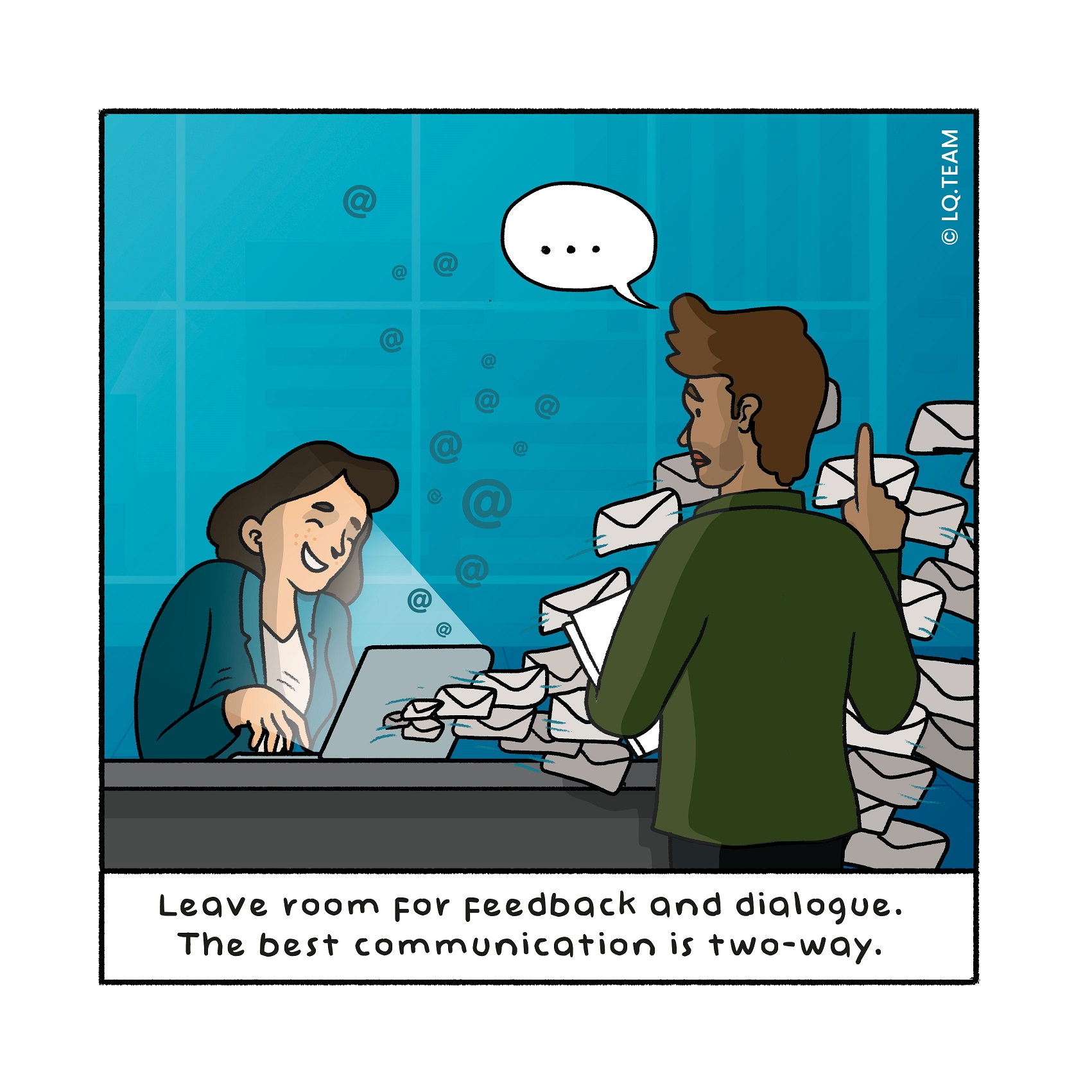
Nut to crack: How do you organise effective communication?
Are you just sending one email from your inbox because it is easy and fast? Will you inform people during regular meetings, or will you plan extra meet- ings? Do you opt for written communication or choose face-to-face meetings to coordinate and communicate? In short: how do you tackle communication during a change process?
Nutcracker: The best communication is two-way communication
There is no better communication than two-way communication. That is why it is essential to obtain ownership of the change at all levels in the organisation so that many one-to-one conversations can occur.
Additionally, supportive means of communication help assist the understand- ing of each individual.
hr and it systems lend themselves well to anchoring key messages. By sys- tematically safeguarding the content of the change message in role descrip- tions, job interviews, during onboarding of new employees, in training cour- ses, as a screensaver, in the form of awards and bonus structures etc., change messages get repeatedly reinforced.
The support tool guides basic central communication steps for a change project or programme. In addition, I have seen campaign-like communication approaches work well in large-scale organisational change processes; the practical example illustrates this.
Support tool: Structured employee communication
The list of ideas below provides simple suggestions to structure centrally controlled employee communication:
- Regular emails
- Intranet posts
- Intranet page
- Newsletters
- Communication packages (slides + video)
- faqs
- Periodic webinars
- Events
For each message, determine when you share it with which audience and who is responsible for developing and sharing the content.
Real-life example: Give meaning
A hospital wants to move from a specialismfocused healthcare facility to a patient driven one. For the staff, this desired change remains abstract and elusive. The question posed to the operational manager is, “How do you bring the concept of ‘patientdriven care’ to life?” The manager chooses to invest in an internal communication campaign. He puts together an editorial team consisting of seven people, two from the nursing staff, two doctors, two from the support staff and one communications expert. They strive to design a combination of messages to inform, motivate, educate and inspire. They plan one communication moment for all employees per week, and they plan for two months. All their communication must convey the following values: concrete, in your face, powerful and full of energy.
The team proactively looks for messages and content from the field, and vary the form: an interview, a best practice story, a white paper, a video, a column by a director, a report on another hospital that is two years ahead, and a challenge for all employees. They use myriad examples to highlight the meaning and implications of patientdriven care – both positive and negative.
The editors partner up with “content scouts” in the field. These scouts proactively search for practical examples of patientdriven working and share these with the editorial team every fortnight during a call. For example, the simplification of conversation protocols with less medical terminology.
This way, the concept of patientdriven care becomes more recognisable, it becomes tangible, and individual employees can understand better how they can incorporate in their daily work.
Tip for change leader
I’ll never forget the following quote from a client: “Organisations don’t change,” the client said, “individuals do. One person at a time, one conversation at a time.” That is hard work. Avoid being pushy and keep communications fresh. Use everyday examples.
Tip for change enabler
Stay true to this rule of thumb: the change leader is the messenger for employees, and the change enabler orchestrates the communications.
Kernel: Organise for maximum impact on the individual level
Change processes often remain abstract for a lengthy period, making it diffi- cult for employees to understand what they mean and how to contribute to them. By sending out brisk, centrally orchestrated, locally loaded communica- tion to employees, in which real examples come to life through different forms of communication, you contribute to this understanding, enabling individuals to help realise the change actively.
